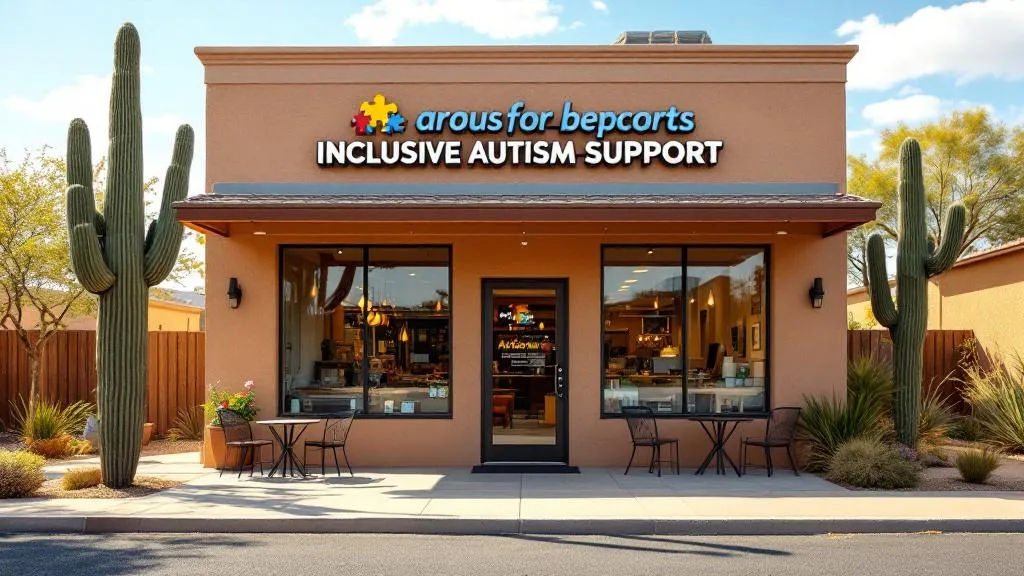Effective Communication for Children with Autism
Unlock effective communication for children with autism! Discover strategies, techniques, and supports to transform connections.

Communication Challenges in Autism
Communication difficulties are commonly experienced by individuals on the autism spectrum. Understanding these challenges is essential in order to provide effective support and intervention. Let's explore the nature of autism communication difficulties and how they manifest.
Understanding Autism Communication Difficulties
Autism communication difficulties can manifest in various ways, including verbal and non-verbal challenges. Some individuals with autism may have limited or no verbal language skills. Others may struggle with expressive language, receptive language, or pragmatic/social language skills. These challenges make it hard for individuals with autism to effectively understand and convey messages [1].
Literal interpretation of language is a common trait among individuals with autism. They may have difficulty understanding sarcasm, idioms, and abstract concepts. This can impact their comprehension and lead to miscommunication in social interactions. Additionally, autistic individuals may struggle with understanding and responding to non-verbal cues such as body language, tone of voice, and facial expressions.
Manifestation of Communication Challenges
The manifestation of communication challenges in autism can vary from individual to individual. Here are some common characteristics:
- Unusual vocal tones and gestures: Autistic individuals may exhibit atypical vocal tones and gestures that do not align with their verbal communication. These unique mannerisms can be a result of challenges in motor control and social communication [1].
- Difficulty with social communication: Children with high-functioning autism or Asperger syndrome may have an extensive vocabulary and use complex sentences. However, they may struggle with social communication, including understanding non-verbal cues such as body language, facial expressions, and tone of voice. This can make it challenging for them to interpret the thoughts and feelings of others [2].
- Impaired perspective-taking: Some children with Asperger syndrome, mild autism, or social communication difficulties may struggle with empathizing and seeing other points of view. This difficulty in perspective-taking can hinder their ability to engage in two-sided conversations and can impact their social interactions and friendships.
By understanding the communication challenges faced by individuals with autism, we can develop effective strategies and interventions to support their communication development. Early identification and intervention play a crucial role in helping children with autism overcome these challenges and enhance their communication skills. To learn more about early intervention for communication development, continue reading our article on importance of early intervention.
Read more: Communication Difficulties In Children With Autism
Early Intervention for Communication Development
Early intervention plays a crucial role in enhancing the lives of children with autism spectrum disorder (ASD) by addressing social skills, communication abilities, and behavior, leading to optimal development [3]. In the context of communication, early intervention programs focus on improving the communication skills of children with autism, as it significantly impacts their overall well-being and quality of life [3].
Importance of Early Intervention
Early identification and intervention of co-occurring developmental concerns in children with autism are crucial for providing comprehensive support and interventions, leading to better outcomes and improved long-term prognosis. Early detection of autism is key to providing timely support and intervention, as symptoms can be observed as early as 18 months of age. It is recommended that children be closely observed throughout their development for any warning signs of autism.
To ensure early identification, routine developmental screenings using tools like the Modified Checklist for Autism in Toddlers (M-CHAT) can be utilized. These screenings help identify potential red flags and allow for early intervention if necessary. Collaborative efforts among healthcare providers, educators, and caregivers are vital in facilitating early identification and intervention. By identifying and addressing communication challenges early on, children with autism can receive the support they need to enhance their communication skills and overall development.
Strategies for Early Identification
To identify potential communication challenges in children with autism at an early stage, various strategies can be employed. These include routine developmental screenings, close observation throughout the child's development, and fostering interdisciplinary collaboration among healthcare providers, educators, and caregivers. By using tools such as the Modified Checklist for Autism in Toddlers (M-CHAT), professionals can systematically assess a child's communication skills and identify any concerns that may require further evaluation or intervention [3].
By proactively monitoring and identifying communication challenges, appropriate interventions and therapies can be initiated promptly. Early identification allows for a comprehensive support system to be put in place, addressing not only communication difficulties but also other areas of development. This holistic approach paves the way for improved outcomes and better long-term prognosis for children with autism.
In the next sections, we will explore strategies and techniques for supporting communication skills in children with autism, including improving verbal communication, enhancing non-verbal communication, and utilizing tools such as speech generating devices (SGDs), American Sign Language (ASL), and Applied Behavior Analysis (ABA) therapy. Stay tuned for valuable insights on how to effectively support and enhance communication in children with autism.
Supporting Communication Skills in Autism
When it comes to supporting individuals with autism in their communication skills, it is important to address both verbal and non-verbal communication. Autism can present various challenges in communication, including difficulties with verbalizing, expressive and receptive language, and pragmatic or social language [1]. Tailoring interventions to improve both verbal and non-verbal communication can greatly enhance the quality of life and overall well-being of individuals with autism.
Improving Verbal Communication
For individuals with autism who face challenges in verbal communication, there are several strategies that can be employed to foster improvement. Speech therapy, for instance, can play a crucial role in improving speech clarity, articulation, and language skills. Speech-language pathologists can work with individuals to develop their vocabulary, grammar, and conversational skills. An individualized approach is essential to address the specific needs and goals of each individual.
In addition to formal therapy, incorporating visual supports can be beneficial for enhancing verbal communication skills. Visual aids, such as visual schedules, social stories, and visual cues, can help individuals with autism understand and follow instructions, express their needs, and engage in conversations. These visual supports provide a visual representation of information, making it easier for individuals to process and comprehend language.
Enhancing Non-Verbal Communication
Non-verbal communication skills are equally important for individuals with autism, especially for those who may struggle with social communication and understanding non-verbal cues. Non-verbal communication includes body language, facial expressions, gestures, and other non-verbal cues that convey meaning in social interactions.
Teaching and practicing social skills can help individuals with autism develop their non-verbal communication abilities. This can involve activities that focus on recognizing and interpreting facial expressions, body language, and tone of voice. Role-playing and social skills groups can provide opportunities for individuals to practice these skills in a supportive and structured environment.
Augmentative and alternative communication (AAC) systems can also be utilized to enhance non-verbal communication. These systems include tools like speech generating devices (SGDs) and sign language. SGDs are electronic devices that allow individuals to communicate through pre-programmed messages or by typing out their thoughts. American Sign Language (ASL) is a visual language that can be an effective mode of communication for individuals who struggle with verbal speech. Implementing AAC systems can empower individuals with autism to express themselves and interact with others more effectively.
By focusing on both verbal and non-verbal communication skills, individuals with autism can develop a comprehensive range of communication abilities. It is important to remember that each individual is unique, and interventions should be tailored to their specific needs and strengths. With appropriate support and intervention, individuals with autism can enhance their communication skills and improve their overall quality of life.
Effective Communication Techniques
When it comes to effective communication for children with autism, various techniques have proven to be beneficial in assisting their communication skills. In this section, we will explore three effective techniques: Speech Generating Devices (SGDs), American Sign Language (ASL), and Applied Behavior Analysis (ABA) Therapy.
Speech Generating Devices (SGDs)
Speech Generating Devices (SGDs) have been shown to be effective, particularly for children and young adults aged 3 to 20 years old. These devices utilize technology to generate speech output, enabling individuals with limited or no verbal communication skills to express their thoughts and needs.
SGDs come in various forms, such as dedicated devices or applications on tablets or smartphones. These devices typically have a customizable vocabulary that allows users to select words or phrases by pressing buttons or using touchscreens. Some SGDs also incorporate picture symbols or visual cues to assist with communication.
By utilizing SGDs, children with autism can overcome communication barriers and engage in meaningful interactions with others. These devices provide a voice for individuals who may struggle with expressive language skills, promoting independence and social connection.
American Sign Language (ASL)
American Sign Language (ASL) is a visual-gestural language that uses hand movements, facial expressions, and body language to convey meaning. As of 2019, roughly 1 million people were using ASL as their primary means of communication, which can be beneficial for children with autism in facilitating communication with a wide community of ASL users [5].
ASL can be particularly helpful for individuals who have difficulty with spoken language or struggle with verbal communication. Learning and utilizing ASL can enhance their ability to express themselves, understand others, and engage in social interactions. It is worth noting that ASL is a distinct language with its own grammar and syntax.
Parents, caregivers, and educators can consider incorporating ASL into the communication strategies for children with autism. ASL classes, resources, and online tutorials are available to support the learning process and promote effective communication.
Applied Behavior Analysis (ABA) Therapy
Applied Behavior Analysis (ABA) therapy is widely used for children with autism, with experts recommending that children with Autism Spectrum Disorder (ASD) receive anywhere from 20 to 40 hours of ABA therapy per week to manage and modify certain behaviors, making it easier to overcome social challenges and avoid disruptions to learning.
ABA therapy focuses on identifying and understanding the factors that influence behavior, with the goal of promoting positive behaviors and reducing challenging behaviors. Within the context of communication, ABA therapy can help children with autism develop language and social skills, improve their ability to engage in conversations, and enhance their overall communication abilities.
ABA therapists work closely with children to assess their communication needs and develop individualized intervention plans. These plans may include strategies such as visual supports, prompt fading, reinforcement techniques, and social skills training. ABA therapy provides structured and consistent guidance to support children with autism in their communication journey.
By utilizing these effective communication techniques - Speech Generating Devices (SGDs), American Sign Language (ASL), and Applied Behavior Analysis (ABA) Therapy - parents, caregivers, and educators can help children with autism overcome communication challenges and enhance their ability to express themselves, understand others, and engage meaningfully in their social environments.
Developing Language Skills in Autism
For children with Autism Spectrum Disorder (ASD), developing language skills can present unique challenges. The ability to communicate effectively, understand others, and use language appropriately can vary greatly among individuals with autism. Some may have limited speaking skills, while others may possess a rich vocabulary. The development of language skills in autism is closely tied to intellectual and social development [6].
Language Development Challenges
Children with autism may encounter difficulties in various aspects of language development. These challenges can include:
- Expressive Language: Some children with autism struggle to express themselves using spoken language. They may have difficulty finding the right words, constructing sentences, or conveying their thoughts and feelings effectively [7].
- Receptive Language: Understanding and comprehending spoken language can also be a challenge for some autistic children. They may have difficulty understanding what others say to them, following instructions, or comprehending complex language structures.
- Non-Verbal Communication: Autistic children may also struggle with non-verbal communication, such as hand gestures, eye contact, and facial expressions. They may find it challenging to interpret and use these non-verbal cues to convey their thoughts and intentions, leading to potential misinterpretations [7].
It is important to recognize and understand the individual communication abilities and challenges of each child with autism. This awareness allows for tailored interventions and support to facilitate their language development journey.
Encouraging Language Acquisition
Supporting language acquisition in children with autism requires a multi-faceted approach that addresses their unique needs. Here are some strategies that can be helpful:
- Speech Therapy: Speech therapy plays a crucial role in improving language skills in children with autism. Speech-language pathologists (SLPs) can provide targeted interventions to enhance communication abilities, such as improving speech clarity, expanding vocabulary, and developing sentence structure. These therapy sessions can be tailored to the specific needs and strengths of each child.
- Augmentative and Alternative Communication (AAC): For individuals with limited or no verbal abilities, AAC systems can be used to supplement or replace speech. This can include communication devices, picture exchange systems, or sign language. Implementing AAC methods can help bridge communication gaps and provide individuals with alternative ways to express themselves effectively.
- Social Communication Interventions: Social communication interventions aim to improve pragmatic language skills, including the use of appropriate social language, turn-taking, and understanding social cues. These interventions can help children with autism develop effective communication in social contexts and facilitate meaningful interactions with others.
- Visual Supports: Visual supports, such as visual schedules, social stories, and visual aids, can greatly assist in language development for children with autism. These visual tools provide structure, enhance understanding, and support communication by supplementing spoken language with visual cues.
By implementing these strategies and providing an environment that supports and encourages communication, parents, caregivers, and professionals can help children with autism develop their language skills. It is crucial to individualize interventions based on the unique communication profile of each child, taking into account their strengths, challenges, and preferences.
Visual Supports for Communication
In the realm of autism communication, visual supports play a crucial role in aiding individuals with autism in learning, understanding language, processing information, and communicating effectively. These visual aids can take the form of symbols, photos, written words, or objects. By utilizing visual supports, individuals with autism can enhance their communication skills and bridge the gap in understanding.
Role of Visual Supports
Visual supports provide a visual representation of information, making it easier for individuals with autism to comprehend and express themselves. These tools serve as a visual bridge, helping individuals navigate language barriers, understand expectations, and communicate their needs and desires. By incorporating visual supports into their daily routines, individuals with autism can experience increased independence and improved social interactions.
Visual supports can take various forms, including:
- Communication books: These books contain symbols, words, or pictures that represent different objects, actions, or concepts. They serve as a portable reference for individuals to communicate their thoughts, needs, and feelings.
- Picture schedules: Picture schedules use a sequence of images or symbols to visually depict the steps involved in a task or activity. They help individuals understand and follow routines, transitions, and expectations.
- Augmentative and alternative communication (AAC) systems: AAC systems encompass a range of tools, from low-tech paper-based systems to high-tech electronic devices. These aids enable individuals to communicate through symbols, gestures, or electronic speech output.
Visual supports can be personalized to meet the specific needs and preferences of each individual with autism. By using visual aids consistently and incorporating them into daily routines, individuals can develop their communication skills and improve their ability to express themselves effectively.
Types of Visual Aids
There are various types of visual aids that can be employed to support communication in individuals with autism. These aids are designed to cater to different communication styles and preferences. Some common types of visual aids include:
- Symbol-based communication: Symbols, such as Picture Exchange Communication System (PECS) cards or communication boards, represent words, objects, or concepts. These symbols can be used to facilitate communication and help individuals express their thoughts, needs, and desires.
- Visual schedules: Visual schedules provide a visual representation of a series of activities or tasks. They help individuals understand the sequence and expectations of daily routines or activities. Visual schedules can be customized with images, symbols, or words to meet the individual's comprehension level.
- Social stories: Social stories utilize visual supports to explain social situations, social cues, and appropriate behaviors. These stories provide individuals with autism with a structured framework for understanding social interactions and navigating social expectations.
- Visual timers: Visual timers use visual cues, such as a countdown clock or color-coded indicators, to help individuals manage time and understand the duration of activities or transitions. Visual timers provide a concrete representation of time, aiding individuals in comprehending and preparing for upcoming events.
By incorporating these visual aids into daily life and communication strategies, individuals with autism can overcome communication barriers and enhance their ability to express themselves effectively.
Understanding the role of visual supports and the various types of visual aids available is essential for creating an inclusive and supportive communication environment for individuals with autism. These tools empower individuals to communicate their needs, thoughts, and emotions, fostering meaningful connections with others.
Read about: Relationship Between Visual Stimming and Autism
References
- https://nationalautismresources.com/autism-and-communication-challenges
- https://www.nidcd.nih.gov/health/autism-spectrum-disorder-communication-problems-children
- https://raisingchildren.net.au/autism/communicating-relationships
- https://www.crossrivertherapy.com/autism/communication-strategies-in-autistic-children
- https://www.nhs.uk/conditions/autism/autism-and-everyday-life/help-for-day-to-day-life/
Does Your Child Have An Autism Diagnosis?
Learn More About How ABA Therapy Can Help
Find More Articles
Contact us
North Carolina, Tennessee, Nevada, New Jersey, Utah, Virginia
New Hampshire, Maine
Massachusetts, Indiana, Arizona, Georgia
.avif)




































































































